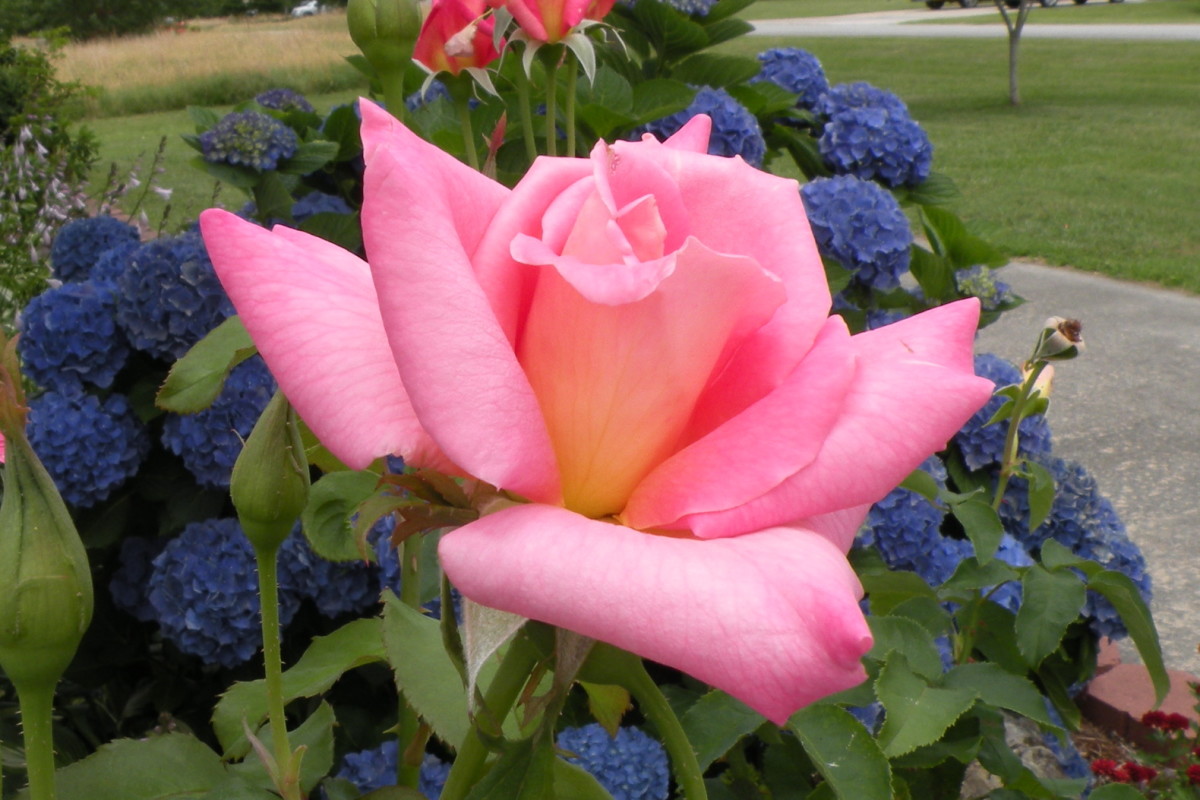Common Tree Health Problems in the UK
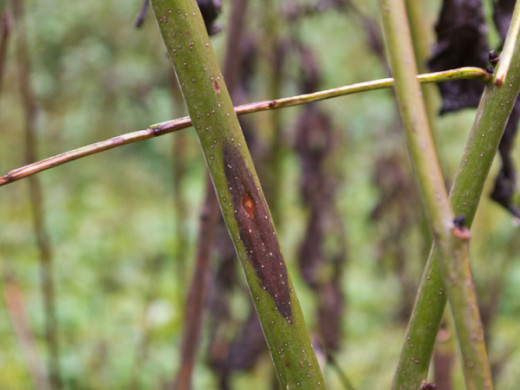
Ash Dieback (Chalara)
The fungus bacteria Chalara fraxinea is the reason for one of the most serious diseases of ash trees. The symptoms are leaf loss and crown dieback. The affected trees will die.
How to recognise ash dieback
The first sign is the appearance of small necrotic spots on the stems and branches of the trees. After this the lesions enlarge and cover the cankers on the branches and causes the leaves to wilt and shed prematurely. Bellow the bark, the fungi often reaches the xylem and perforate middle lamella. The disease is chronic, but often causes the death of young ash trees. Older trees have the chance of surviving the attack, but sooner or later they also give in and the result is the same as with younger specimens.
Control and prevention
Currently, there isn't an effective way to deal with ash dieback. All of the strategies to control the disease have failed. The only way out is to fell down the tree and burn it. The fungus still lives and grows on the fallen leaves, so it still has a chance to infect other trees as well. But this doesn’t mean you should destroy all the trees in the infected area. This could backfire and you could end up killing the resistant specimens along with the infected. Researchers suggest a different method. Their idea is to take branches from the resistant trees and graft them to rootstock. They will produce new seeds which will turn into trees that are able to withstand the attacks of the ash dieback disease. However, it will probably take decades to restore the population of ash trees all over Europe.
Ash dieback in the UK
In 2012 the UK Government stated that the fungus had affected trees in nurseries in Buckinghamshire and also specimens planted in a Leicestershire car park. The saplings were imported from other European countries. This led to ban on importation and movement of ash plants from other parts of the continent.
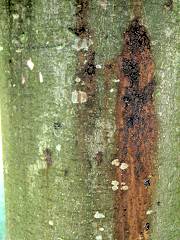
Bleeding Canker of Horse Chestnut
This is a common tree problem that affects horse chestnut trees. Several different pathogens are believed to be the cause of infection. Some of the new cases were caused by the Pseudomonas syringae pathovar aesculi, which used to infect only Indian horse chestnut.
How to recognise bleeding canker
The first sign of the disease is when a sticky liquid begins to ooze from blemishes on the bark of infected tree trunks. Another sign is the appearance of long cracks on the tree. After this the bark peels and exposes the inner bark. The foliage slowly turns yellow and falls prematurely. The crown of the tree eventually dies. It usually takes a long time for the disease to progress, but younger trees can give in too quickly.
The bleeding of the bark may be at the base of the tree, just above the soil, or higher up the trunk. Scientists noticed that the oozing sometimes ceases during the summer. This leaves a dark, brittle crust near the blemishes.
Control and prevention
For the moment, there is no direct treatment available. If a crank spreads throughout the whole horse chestnut tree, it will cut its food supply and will cause death. Tree surgeons say it’s not wise to cut away the infected branches. This can be quite counter-productive. You will weaken the tree and allow the spread of the disease. Also, you shouldn’t fell the tree when it begins to show signs of affection. In some cases, the bleeding canker ceases to spread and the tree recovers. But in most of the times, the disease progresses vigorously and kills or weakens the specimens. They become potentionally dangerous and need to be felled.
Horse chestnut bleeding canker in the UK
This is a tree problem that affects horse chestnuts all over the UK. The highest number of reported cases is within South-East England.
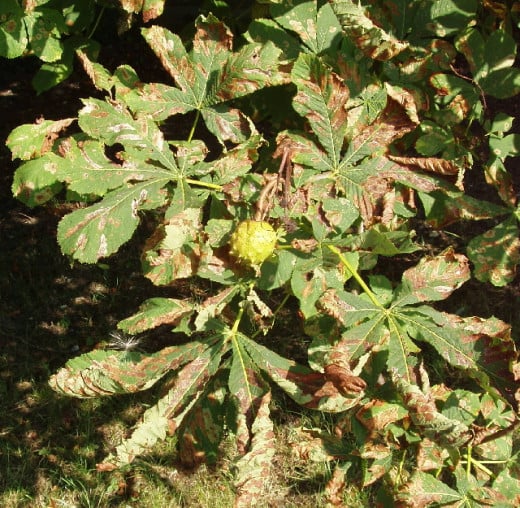
Horse Chestnut Leaf Miner
This is a tiny leaf-mining moth. It can grow up to 5mm and has shiny, bright brown forewings with thin, silver stripes. The hind wings are coloured in dark grey and have long fringes.
Development and damage
The female leaf miner moth can lay up to 40 eggs on the upper surface of the leaves. It takes them around three weeks to hatch. When the larvae develop they go through different feeding and pre-pupal phases. During each stage, it causes damages to the leaves of the horse chestnut. When the larvae grow and develop, they make small mines on the leaf, which turn into dead patches.
This tree pest causes significant damage to the crown of the tree. It results mainly in late summer browning. Besides this, there is no evidence that the infected trees die because of the tiny moth. However, there may be reduction in the seed weight, the reproductive capacity and the photosynthetic storage of the plant. The trees can survive numerous attacks of the pest and re-flush normally in the following year. The good thing is that the damage it causes appears too late in the growing season and doesn’t affect the tree’s performance.
Control and prevention
The horse chestnut leaf miner doesn’t cause foliage dieback or weaken the tree's health. This means that you don’t need to bring down the infected tree. Even the severely affected specimens re-flush as normal when spring comes. There are a few ways to battle the tiny moth:
- Insecticides – There are more than 60 types of parasitoids that can be used against the leaf miner.
- There is a number of natural predators that feed on the moth’s larvae. The blue tit (Parus caeruleus), great tit (Parus major) and other tit species can “remove” between 2% and 4% of the larvae. There are also the oak bush crickets too. They can consume up to ten larvae per day.
- The most practical and safest way to deal with this tree problem is to remove the fallen leaves during autumn and winter. The pupae of the moth spend the cold season hidden in the leaves on the ground. You can use commercial composts or burn the leaves to destroy the tiny intruders. This also helps to reduce their population in the following year.
Horse chestnut leaf miner in the UK
The leaf miner moth was first discovered in Macedonia in 1985, but it has found its way to the United Kingdom. It can be found throughout England and Wales.
Phytophthora Lateralis
This is a pathogen that kills the roots of the host tree. It causes foliage dieback, bleeding from stem lesions and damages the collars.
How to recognise Phytophthora lateralis
When a tree is infected with this pathogen, the foliage turns slightly lighter in colour compared to healthy specimens. It turns from pale green to yellow and then light brown. When it reaches the latter colour, this means that the tree is dying. Phytophthora lateralis spreads from the roots up to the trunk of the tree. As it spreads through the host, root and collar lesions form.
Control and prevention
The trees, infected with this pathogen, need to be felled and burned. Experts believe that if this tree problem occurs in nurseries, it can be treated with different biosecurity methods used to deal with other pathogens. The ones used to fight Phutophtora ramorum show good results. However, the same strategy doesn’t show satisfying results with non-nursery trees. Once the tree disease establishes in a forestry situation, it is practically impossible to eradicate.
Phytophtora lateralis in the UK
It affects the Lawson cypress trees in Britain. The first case was recorden back in 2010 in Scotland. Now it has spread to Devon, Yorkshire and Northern Ireland.
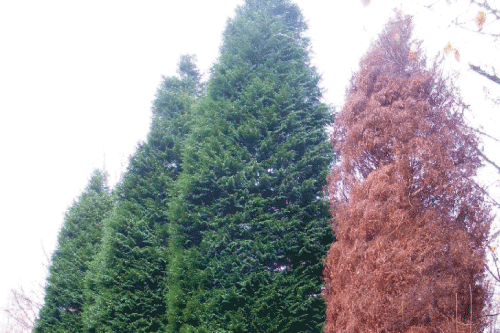
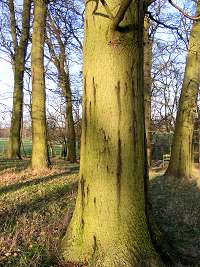
Acute Oak Decline
This is a tree disease that affects mature oak specimens in the UK. The number of reports about infected trees increases rapidly. When the tree is infected with acute oak decline, the trunk bleeds or oozes a dark fluid from small lesions or splits in the bark. It can lead to death of the infected specimen within 4 to 5 years.
How to recognise acute oak decline
When the tree is infected with acute oak decline, the trunk bleeds or oozes a dark fluid from small lesions or splits in the bark. The splits are often between 5 and 10cm long and can be close to one another or further apart. The lesions can be seen between one or two metres above the ground. The fluid begins to run down the trunk in spring and leaves dark stains. Bellow the outer bark of the tree, the disease causes the inner bark to break down. This creates a lesion, which soon turns into a cavity filled with the dark fluid.
There are two theories about the cause of acute oak decline. One of them is the buprestid beetle, Agrilus biguttatus. While it’s not directly linked to the bleeding of the trunk, scientists believe it takes advantage on weakened trees and further worsen their condition. The other more realistic cause is a new unknown bacterium, which scientist recently identified. They don’t know much about it and hope further research will lead to better understanding of the acute oak decline disease. Once they’ve gathered enough data, it will be used to develop management and monitoring strategies.
Control and prevention
According to scientists, there is no adequate way to treat acute oak decline. Until they know more about the disease, they can’t offer a way to control its spread and prevent it from occurring at all. However, there are some guidelines by the Forestry Commission on how to manage affected trees. Here are some of them:
- You shouldn’t fell trees when it’s wet outside or the plant itself is wet. This could increase the chances of spreading the disease. After you take down the tree, strip the bark and sapwood and burn them on the spot. This should be done in order to prevent the disease from affecting other specimens. Don’t think of using bark chips or other parts of the dead trees. No matter how much you want to use them for mulch, or other composting purposes, don’t. You can damage your healthy plants.
- Experts don’t encourage pruning the infected trees. You should do it only when the dead branches threaten the health of other species and pose as a safety risk. If you prune them, you can weaken the tree and help the disease spread further.
- Always disinfect your pruning and felling equipment. You should also clean the soles of your footwear before you leave the site.
Acute oak decline and the UK
This disease has affected hundreds of trees in Britain. It has infected oaks in central and South-East England. There are also cases of acute oak decline In some parts of Wales.
Resource: Forestry Commison
- Plant health - Pests and diseases
Tree, woodland and forest pests and diseases, their spread, symptoms, identification and treatment.


